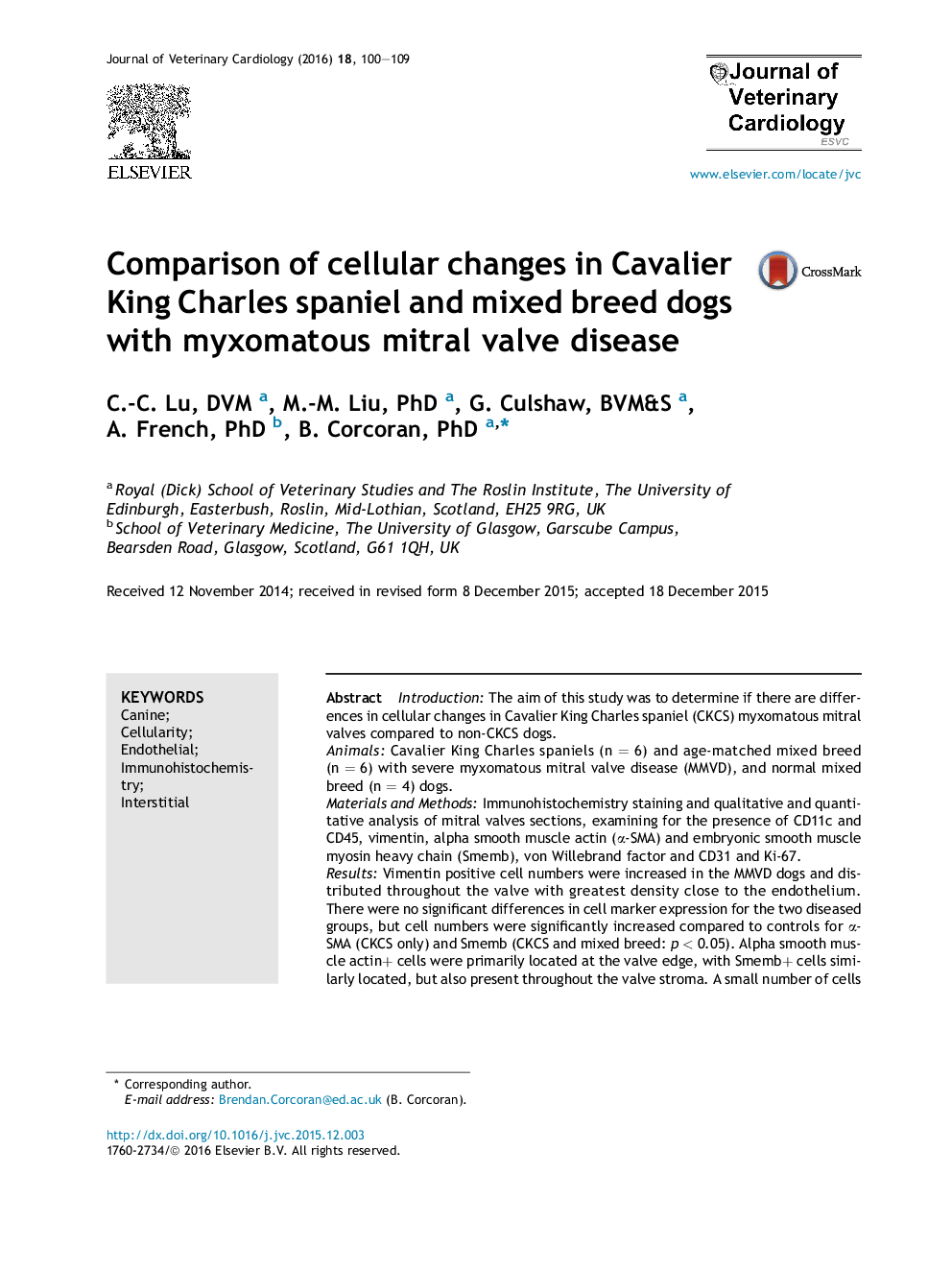| Article ID | Journal | Published Year | Pages | File Type |
|---|---|---|---|---|
| 2400016 | Journal of Veterinary Cardiology | 2016 | 10 Pages |
IntroductionThe aim of this study was to determine if there are differences in cellular changes in Cavalier King Charles spaniel (CKCS) myxomatous mitral valves compared to non-CKCS dogs.AnimalsCavalier King Charles spaniels (n = 6) and age-matched mixed breed (n = 6) with severe myxomatous mitral valve disease (MMVD), and normal mixed breed (n = 4) dogs.Materials and MethodsImmunohistochemistry staining and qualitative and quantitative analysis of mitral valves sections, examining for the presence of CD11c and CD45, vimentin, alpha smooth muscle actin (α-SMA) and embryonic smooth muscle myosin heavy chain (Smemb), von Willebrand factor and CD31 and Ki-67.ResultsVimentin positive cell numbers were increased in the MMVD dogs and distributed throughout the valve with greatest density close to the endothelium. There were no significant differences in cell marker expression for the two diseased groups, but cell numbers were significantly increased compared to controls for α-SMA (CKCS only) and Smemb (CKCS and mixed breed: p < 0.05). Alpha smooth muscle actin+ cells were primarily located at the valve edge, with Smemb+ cells similarly located, but also present throughout the valve stroma. A small number of cells close to the valve edge co-expressed α-SMA and Smemb. Endothelial von Willebrand factor expression was identified in all valves, with evidence of disrupted endothelium in the diseased, but was also found in diseased valve stroma. There was no staining for CD11c, CD45 or CD31 in any valve. Ki-67+ cells formed linear clusters at the leaflet tip and were sparsely distributed throughout both myxomatous valve groups.ConclusionsThe cellular changes notes with advanced stage MMVD appear similar for CKCS when compared to mixed breed dogs.
